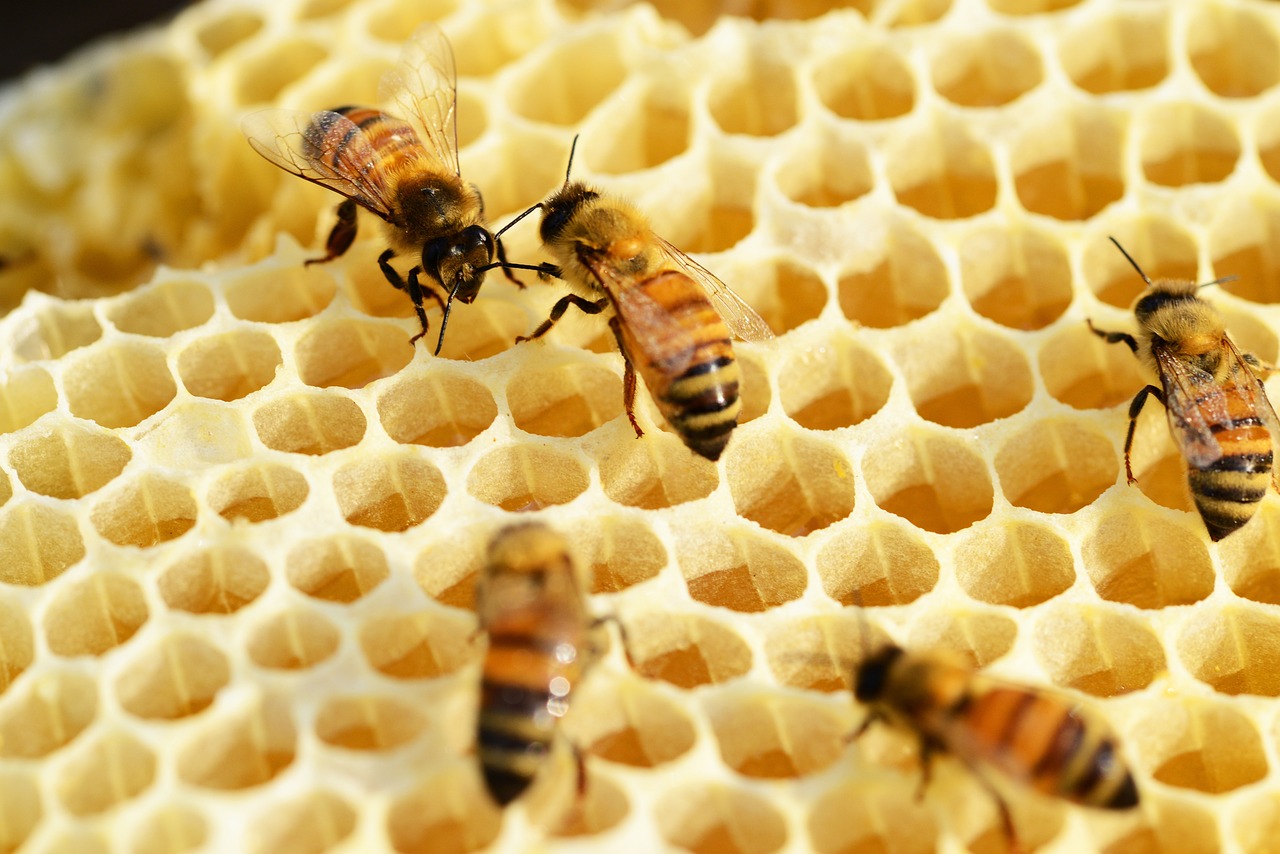
This is Honeycomb, a recently constructed condominium based in the Bahamas. Complete with pools and balconies, this feat of architecture takes inspiration from a very special shape (which you might’ve already guessed based on its name): the hexagon. Architecturally speaking, hexagons are important not only to give a sleek and modern look, but to provide functionality through its strong structural integrity. Due to its greater number of edges, it also wastes the least amount of wall space compared to other commonly used shapes, such as rectangles.
In nature, these principles of hexagonal efficiency are used as well, not only in visible structures like honeycombs, but at a molecular level as well. Here, for example, is the benzene ring: the structure formed when 6 carbon atoms bond with hydrogen to create a perfect hexagon. Some could say this hexagonal shape allows it to become more stable as a molecule, but this observation in itself is not exactly revolutionary.
When hexagons are in contact with each other, they form 120° angles that are physically the strongest and most difficult to break. Thus, not only are hexagons geometrically efficient, their strength is also backed up by physics!

Some other biological ways hexagons have shown up to act as stabilizing structural elements are with turtle shell scutes, fly eyes — and of course, the beloved honeycombs. These hexagonal structures along with their almost perfect architectural properties seem to be omnipresent in nature and beyond.
Some of these “honeycomb” structures, aside from being structurally strong, can also look really cool. Take a look at China’s HEX-SYS, for example. Its design emphasizes its unique hexagonal modules that contribute to a faster construction. This modular approach also gives it the benefit of being movable and fluid as the hexagonal panels are individual and not permanently bonded to the architectural frame.

In the future, I hope to see hexagons utilized more widely in architecture. The shape not only offers some opportunities for effective engineering but is also pleasing to the eye. Due to its high occurrence in nature, biomimetic technology with hexagons has also been a point of innovation in respect to nanotechnology and biomedical engineering. So, the next time you see a beehive, appreciate the thousands of years of evolution that have taken place to give us honey in the most methodical hexagonal packages.
Citations
Andrei, Mihai. “The hexagon shape and why it shows up so much in nature.” ZME Science, 18 September 2021, https://www.zmescience.com/feature-post/natural-sciences/mathematics/hexagon-shape-nature-physics-13092021/. Accessed 10 March 2024.
Lam, Sharon. “Hexagons for a Reason: The Innovative Engineering Behind BIG’s Honeycomb.” ArchDaily, 10 January 2017, https://www.archdaily.com/802378/hexagons-for-a-reason-the-innovative-engineering-behind-bigs-honeycomb. Accessed 10 March 2024.
Team, ArchDaily. “Hexagonal Plans: Geometric Sets in the Architectural Composition.” ArchDaily, 7 March 2023, https://www.archdaily.com/997160/hexagonal-plans-geometric-sets-in-the-architectural-composition. Accessed 10 March 2024.
Team, ArchDaily. “HEX-SYS / OPEN Architecture.” ArchDaily, 26 November 2015, https://www.archdaily.com/777759/hex-sys-open-architecture?ad_medium=gallery. Accessed 10 March 2024.
Upadhyaya, Nidhi. “Hive Mind: Architects are Making Heroes of Hexagonal Forms.” Architizer, https://architizer.com/blog/inspiration/collections/hive-mind-hexagonal-forms-hero/. Accessed 10 March 2024.





